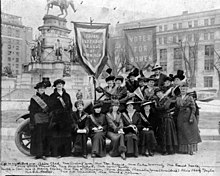
Mary Johnston was an American novelist and women's rights advocate from Virginia. She was one of America's best selling authors during her writing career and had three silent films adapted from her novels. Johnston was also an active member of the Equal Suffrage League of Virginia, using her writing skills and notability to draw attention to the cause of women's suffrage in Virginia.

Lila Meade Valentine was a Virginia education reformer, health-care advocate, and one of the main leaders of her state's participation in the woman's suffrage movement in the United States. She worked to improve public education through her co-founding and leadership of the Richmond Education Association, and advocated for public health by founding the Instructive Visiting Nurses Association, through which she helped eradicate tuberculosis from the Richmond area.

Emma Smith DeVoe was an American women suffragist in the early twentieth century, changing the face of politics for both women and men alike. When she died, the Tacoma News Tribune called her Washington state's "Mother of Women's Suffrage".
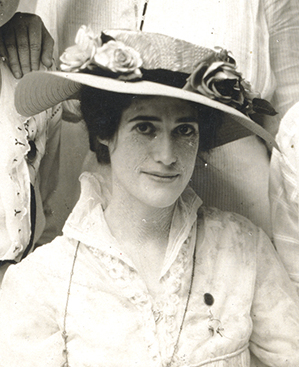
Adele Goodman Clark was an American artist and suffragist.

Kate Langley Bosher was an American novelist from Virginia, best known for her novels Mary Cary (1910) and Miss Gibbie Gault (1911). She was also a suffragist and founding member and officer of the Equal Suffrage League of Virginia.

Women's suffrage was established in the United States on a full or partial basis by various towns, counties, states and territories during the latter decades of the 19th century and early part of the 20th century. As women received the right to vote in some places, they began running for public office and gaining positions as school board members, county clerks, state legislators, judges, and, in the case of Jeannette Rankin, as a member of Congress.

The Texas Equal Suffrage Association (TESA) was an organization founded in 1903 to support white women's suffrage in Texas. It was originally formed under the name of the Texas Woman Suffrage Association (TWSA) and later renamed in 1916. TESA did allow men to join. TESA did not allow black women as members, because at the time to do so would have been "political suicide." The El Paso Colored Woman's Club applied for TESA membership in 1918, but the issue was deflected and ended up going nowhere. TESA focused most of their efforts on securing the passage of the federal amendment for women's right to vote. The organization also became the state chapter of the National American Woman Suffrage Association (NAWSA). After women earned the right to vote, TESA reformed as the Texas League of Women Voters.

Women's suffrage in Virginia was granted in 1920, with the ratification of the Nineteenth Amendment. The General Assembly, Virginia's governing legislative body, did not ratify the Nineteenth Amendment until 1952. The argument for women's suffrage in Virginia began in 1870, but it did not gain traction until 1909 with the founding of the Equal Suffrage League of Virginia. Between 1912 and 1916, Virginia's suffragists would bring the issue of women's voting rights to the floor of the General Assembly three times, petitioning for an amendment to the state constitution giving women the right to vote; they were defeated each time. During this period, the Equal Suffrage League of Virginia and its fellow Virginia suffragists fought against a strong anti-suffragist movement that tapped into conservative, post-Civil War values on the role of women, as well as racial fears. After achieving suffrage in August 1920, over 13,000 women registered within one month to vote for the first time in the 1920 United States presidential election.

EleanoraClare Gibson Houston was an American painter, women's rights advocate, and suffragist. Born and raised in Richmond, Virginia, Houston studied art at an early age, traveling to New York and abroad, before returning to Richmond to teach and open a studio with Adele Goodman Clark. She was an active participant in the women's suffrage movement in Virginia.

Women's suffrage in California refers to the political struggle for voting rights for women in the state of California. The movement began in the 19th century and was successful with the passage of Proposition 4 on October 10, 1911. Many of the women and men involved in this movement remained politically active in the national suffrage movement with organizations such as the National American Women's Suffrage Association and the National Woman's Party.

Elizabeth Dabney Langhorne Lewis was the founder of the Lynchburg Equal Suffrage League and vice-president of the Equal Suffrage League of Virginia. She was also one of the founders of the Virginia League of Women Voters.

Women's suffrage in Missouri became more active as a movement after the Civil War. There were significant developments in the St. Louis area, though groups and organized activity took place throughout the state of Missouri. An early suffrage group, the Woman Suffrage Association of Missouri, was formed in 1867, attracting the attention of Susan B. Anthony and leading to news items around the state. This group, the first of its kind, lobbied the Missouri General Assembly for women's suffrage and established conventions. In the early 1870s, many women voted or registered to vote as an act of civil disobedience. The suffragist Virginia Minor was one of these women when she tried to register to vote on October 15, 1872. She and her husband, Francis Minor, sued, leading to a Supreme Court case that asserted the Fourteenth Amendment granted women the right to vote. The case, Minor v. Happersett, was decided against the Minors and led suffragists in the country to pursue legislative means to grant women suffrage.

This is a timeline of women's suffrage in Virginia. While there were some very early efforts to support women's suffrage in Virginia, most of the activism for the vote for women occurred early in the 20th century. The Equal Suffrage League of Virginia was formed in 1909 and the Virginia Branch of the Congressional Union for Woman Suffrage was formed in 1915. Over the next years, women held rallies, conventions and many propositions for women's suffrage were introduced in the Virginia General Assembly. Virginia didn't ratify the Nineteenth Amendment until 1952. Native American women could not have a full vote until 1924 and African American women were effectively disenfranchised until the Voting Rights Act passed in 1965.
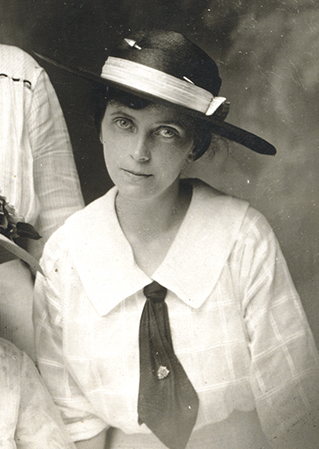
Mary Eugenia Benson Jobson was an American suffragist and activist.
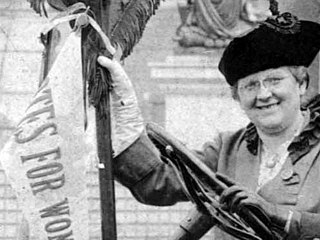
Mary Ellen Pollard Clarke was an American suffragist. She was the editor-in-chief of the short-lived Virginia Suffrage News and the author of essays on public policy, literature, and suffrage.
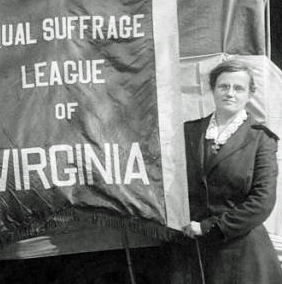
Edith Clark Cowles was an American suffragist. She was one of the founders of the Equal Suffrage League of Virginia.
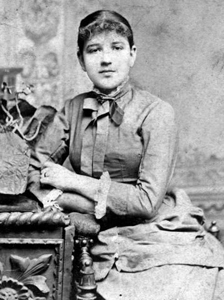
Ida Mae Thompson was an American suffragist. She was active in the Equal Suffrage League of Virginia and later worked for the Works Progress Administration's Historical Records to obtain and archive records from the suffrage movement in Virginia.

Jessie Fremont Easton Townsend was an American suffragist. She was active in the Equal Suffrage League of Virginia and was an early member of the Norfolk branch of the organization.
